Proper airflow can make or break your cannabis curing process by controlling moisture levels and preventing mold growth. You'll need oscillating fans and dehumidifiers to maintain ideal conditions between 60-70°F and 50-60% humidity. Good circulation removes moisture-laden air while preserving valuable terpenes, but direct airflow on buds can damage quality. Watch for even drying patterns and consistent moisture distribution as signs of success. Understanding these key airflow principles will transform your curing results.
Understanding the Science Behind Cannabis Airflow During Curing
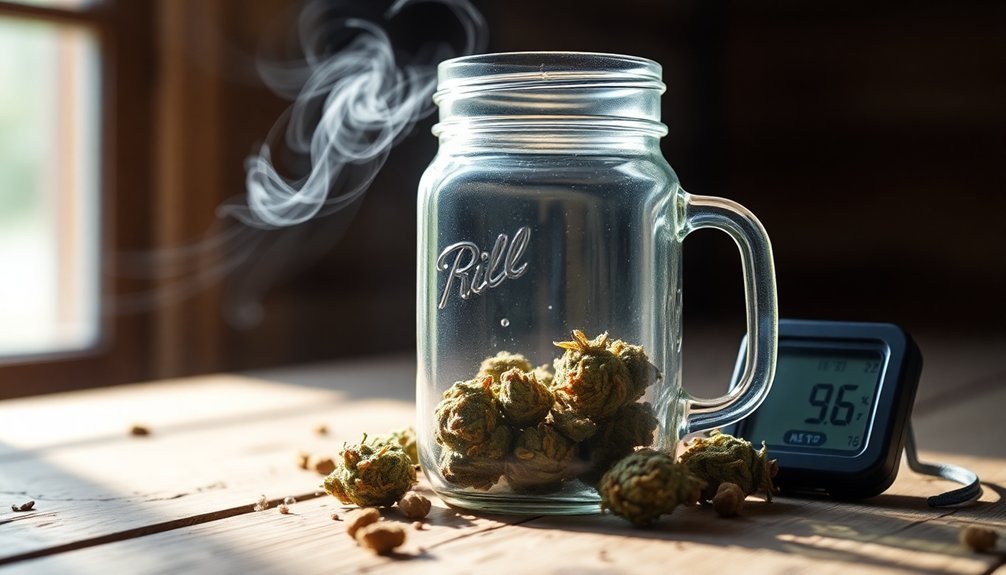
Why is proper airflow so essential during the cannabis curing process? The science is clear: airflow serves as your primary defense against mold growth while preserving valuable terpenes.
When you're curing cannabis, proper air circulation helps remove moisture-laden air, ensuring consistent drying throughout your buds.
You'll need to maintain ideal conditions by understanding how airflow and humidity work together. If you've got stagnant air pockets, you're risking uneven drying and potential hotspots that can compromise your product's quality.
That's why positioning oscillating fans strategically is vital – they'll create gentle air movement without directly hitting your buds.
Essential Equipment for Optimal Air Circulation
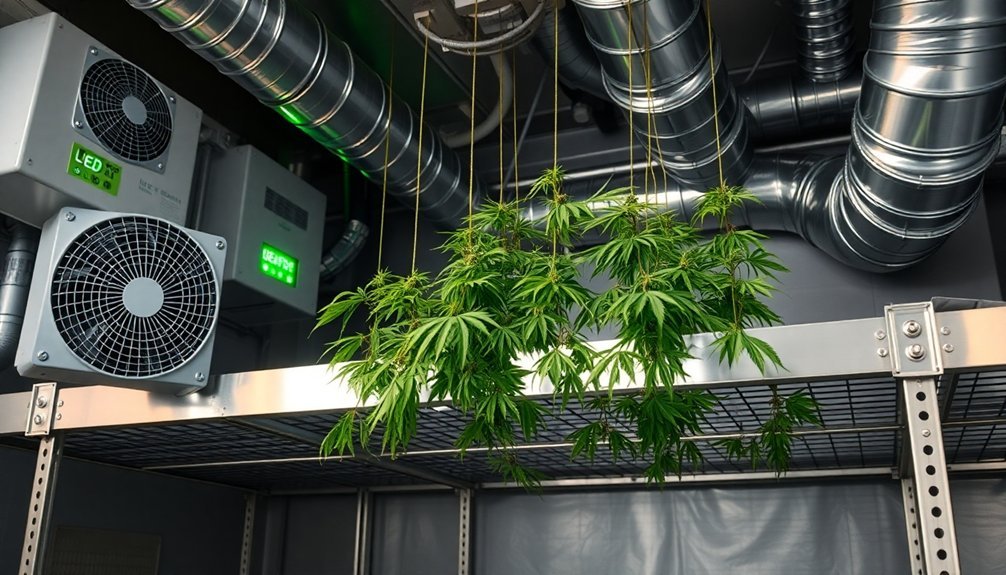
When setting up your curing space, you'll need several key pieces of equipment to maintain ideal air circulation.
Start with oscillating fans equipped with speed controllers to provide gentle, adjustable airflow that won't directly impact your buds. These fans help prevent stagnant air and maintain consistent temperature throughout the space.
Install dehumidifiers set to low settings to regulate moisture levels and achieve the best 50-60% humidity range.
Your setup should include passive intake and exhaust systems to create balanced air movement without compromising terpenes during the curing process.
This combination of equipment works together to prevent hot spots and mold growth while ensuring even drying.
Mastering Temperature and Humidity Control
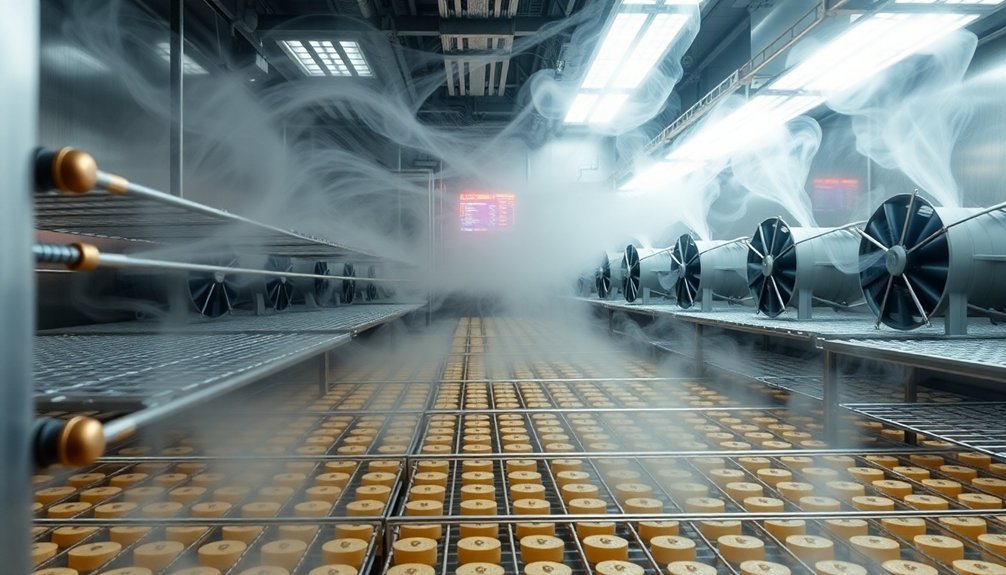
Building on your air circulation setup, precise temperature and humidity control forms the backbone of successful curing.
You'll need to maintain temperatures between 60°F and 70°F while keeping humidity levels at 50%-60% for ideal results. Proper airflow management and regular monitoring guarantee your curing cannabis maintains excellent air quality throughout the process.
Precise temperature and humidity control combined with proper airflow monitoring creates optimal conditions for successfully curing your crop.
- Use hygrometers in airtight containers to monitor humidity and prevent excess moisture buildup
- Guarantee adequate airflow to eliminate heat pockets and maintain consistent temperature
- Implement daily jar burping during the first week to regulate ideal moisture content
- Keep air circulation gentle but consistent to prevent uneven drying
- Check humidity levels frequently to stay below 65%, preventing microbial growth
Signs of Proper vs. Improper Airflow Management
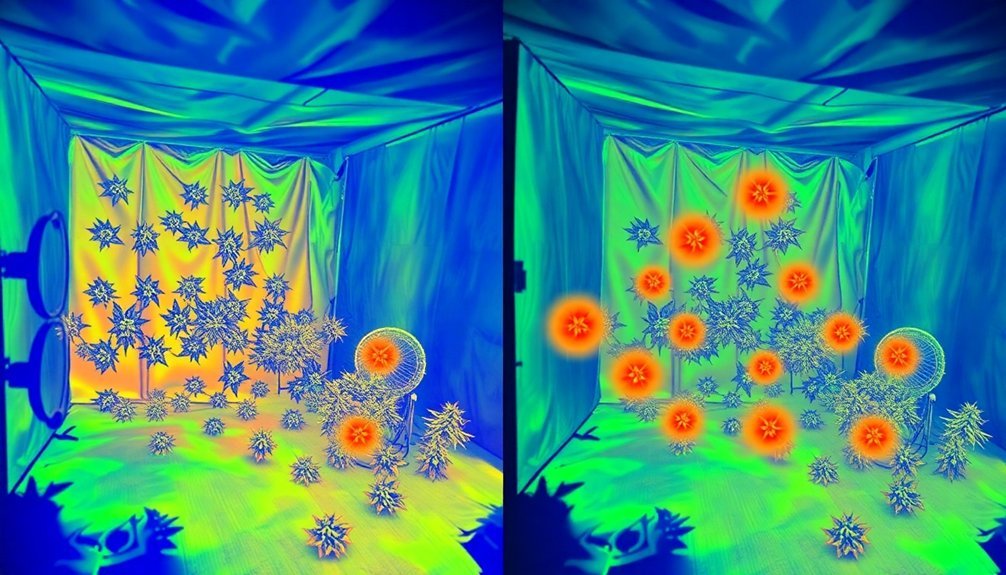
Recognizing signs of proper versus improper airflow during cannabis curing can mean the difference between a successful harvest and wasted product.
When you've achieved proper airflow management, you'll notice even drying across all buds, consistent moisture distribution, and stable humidity levels between 50-60% relative humidity.
Watch for warning signs of poor airflow: uneven drying patterns, stagnant air pockets, or variations in bud density. If you spot these issues, they can lead to mold growth and compromise your cannabinoids and terpenes.
To maintain ideal conditions during the curing process, position oscillating fans strategically to create gentle air movement without directly hitting your buds.
You'll know your proper airflow setup is working when buds dry uniformly and maintain their aromatic properties, while humidity readings remain steady within the target range.
Advanced Techniques for Long-term Storage Success
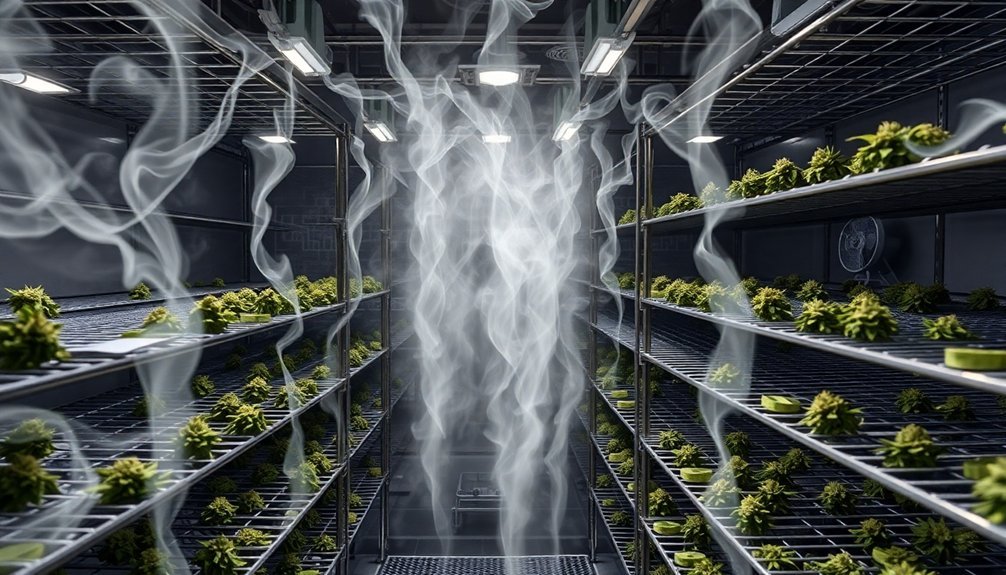
To achieve ideal long-term storage success, you'll need to master advanced airflow techniques that go beyond basic curing methods.
Advanced storage techniques require mastering sophisticated airflow control beyond standard curing processes for optimal preservation.
Cannabis cultivators who maintain a controlled environment with precise airflow management consistently produce superior results. In your drying room, use oscillating fans at low speeds to create gentle air movement while monitoring humidity levels between 50-60%.
- Install multiple humidity sensors throughout your drying room to detect microclimates
- Rotate airtight containers daily to guarantee proper moisture content distribution
- Set up automated climate control systems to maintain consistent temperature
- Create a maintenance schedule for cleaning and calibrating airflow equipment
- Document environmental readings to track patterns and optimize shelf life
Frequently Asked Questions
Do I Need a Fan in My Curing Chamber?
Yes, you'll need a fan in your curing chamber. It prevents mold growth, maintains consistent humidity, and guarantees even drying. Run it at low speed to protect trichomes while allowing proper air circulation.
Can You Dry Meat With a Fan?
Yes, you can dry meat with a fan, but you'll need to control the airflow carefully. It's crucial to maintain gentle, consistent circulation while monitoring temperature and humidity to prevent over-drying or spoilage.
In Summary
You've now got the knowledge to take control of your curing process through proper airflow management. Remember that even small adjustments to your ventilation setup can make a huge difference in your final product's quality. By monitoring temperature, humidity, and air circulation carefully, you'll avoid common issues like mold and maintain your cannabis's potency, flavor, and overall value during long-term storage.

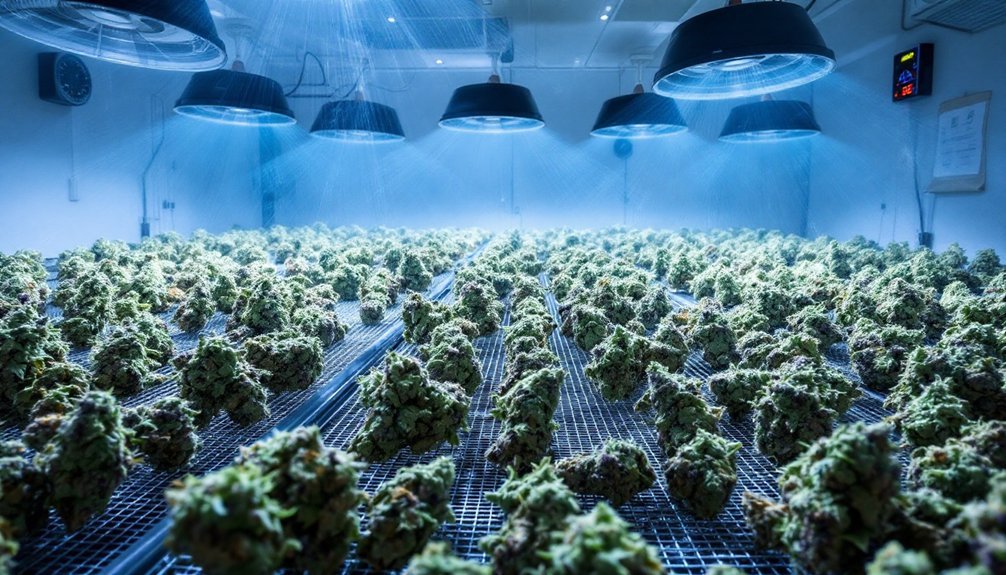



Leave a Reply